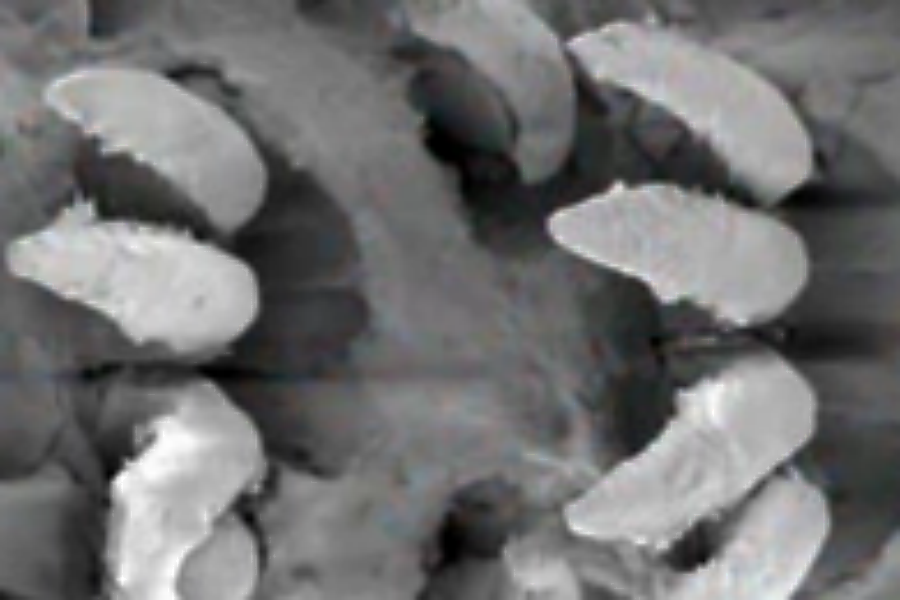Snail teeth may be secret to faster cars. Really.
Loading...
A research team at the University of Portsmouth in England reported that a natural material has surpassed the strength of any other known, including spider silk, titanium, and Kevlar.
The winner for strongest known material on earth? Limpet teeth.
Limpets are vegetarian sea snails that typically reach about five centimeters in diameter and have conical shells, according to News Maine. They latch on to rocks and move in a similar manner to garden snails, using a foot under their shell to move about. To feed they do not move their bodies; they extend a tongue-like appendage called a radula that features rows of tiny teeth that aid in scraping and moving food to its mouth.
Asa Barber, a professor in the school of engineering that led the research study, found the limpets’ structure fascinating after seeing a picture in a textbook, and upon further research discovered the teeth are composed of protein frames and small, closely packed fibers of the mineral goethite.
“I thought, ‘Wow, this is . . . like the structures we use in aerospace structures, but on a much smaller scale,’” Barber said, reported News Maine. Knowing that such materials tend to be strong and light, therefore used frequently in high-performance aircrafts and cars, Barber was inspired to test their strength and see how they compared to other known biological materials.
In the lab, researchers attempted to pull the structure apart to test its tensile strength. The limpet teeth needed up to 6.5 gigapascals (GPa) of pressure to pull apart the tooth material. Comparatively, spider silk displays 4.5 GPa in tensile strength, and Kevlar only 3 to 3.5 GPa, according to a study published in Interface.
Another finding showed that limpet teeth retain their strength no matter the size, which also makes it distinct from in other structures. Typically, the larger the structure the more flaws it contains, therefore the weaker it becomes. Limpet teeth bypass this weakness by utilizing fibers that are small enough to avoid flaws affecting the overall composition.
How might humans apply their understanding of the tiny, super-strong teeth of limpets?
Barber said that by discovering a material that is not only stronger than any other but also extremely light, they have opened the door for better material engineering, especially for vehicles. Racing bikes and cars require strength, but now it is possible that they will not have to sacrifice speed from using heavier materials. A limpet-tooth inspired design could help achieve this.
"It's about translating design principles found in limpets to form structures that are strong, yet light," said Barber, reported National Geographic. "For the next five or ten years, this is the challenge."








